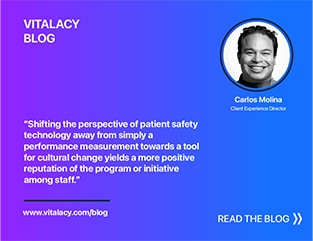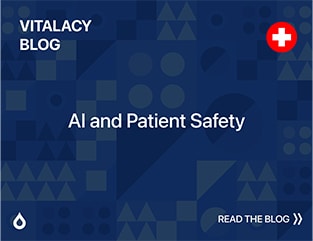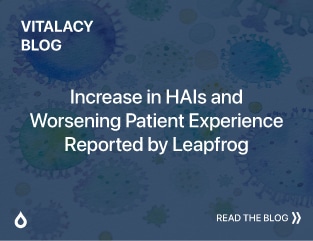
For more than a decade, the Joint Commission has stressed good hand hygiene as a condition of accreditation at its 21,000 associated healthcare facilities. Despite this, the Commission reports that proper procedures – by which they mean handwashing practices endorsed by either the CDC or the World Health Organization – are observed only around half the time.
Poor hand washing has become a major vector for the spread of healthcare-associated infections (HAIs), and since the beginning of 2018, the Joint Commission has been taking action. New rules went into effect on January 1 that sanction care providers at all levels for failing to abide by hand hygiene standards, and real teeth have been put into enforcing the rules. Though long-term outcomes take time to observe, in the short-term, hospitals and ambulatory care facilities seem to have gotten the message that there’s a new sheriff in town.
A New Mandate from the Joint Commission
Since at least 2008, the Joint Commission has urged the facilities and organizations it accredits to enforce stricter hand hygiene policies. Voluntary efforts have been disappointing, as roughly half of the patient interactions observed by Joint Commission surveyors were cited for a failure of the staff member to wash or sanitize properly before treating the patient. The Commission is sympathetic to these shortfalls, noting that a busy nurse might have to wash and/or use hand sanitizer upwards of 100 times per shift. The mounting risk of HAIs, however, along with the frustrating lack of improvement over the years, has motivated the Commission to get serious and impose a mandate member organizations can no longer ignore.
Old Rules with a Renewed Urgency
Every year, millions of people pick up some kind of HAI, and nearly 100,000 die in the United States alone because of these infections. The biggest single factor driving this tragedy is poor hand hygiene, which is responsible for about 40 percent of the HAI load. In a healthcare environment hagridden by drug-resistant bacteria and hospital-borne viruses, the Joint Commission’s decision to impose sanctions for violations of established handwashing protocols comes not a minute too soon.
The 2018 mandate does not contain a change in handwashing procedures; best practices for that are set by the WHO and CDC. Rather, the Commission has made compliance with either organization’s guidelines mandatory, with stiff penalties for violations. To enforce the mandate, Joint Commission surveyors – all of them credentialed healthcare providers themselves – are sent on unannounced site visits to verify facilities are living up to the Commission’s standards. While visiting a facility, surveyors talk with administrators, doctors, nurses, non-clinical staff and patients to get a robust impression of how care is delivered. They may also stay close to a randomly chosen patient to observe the quality of care they get at every stage in their treatment, from first arrival to final discharge.
Surveyors have been working this way since the Joint Commission was founded in 1951, but from the beginning of 2018, they have the authority to cite facilities for every single observed instance of poor or overlooked handwashing or hand sanitizing prior to patient care. Citations earn an “inadequate” rating and compel the surveyed facility to develop a comprehensive plan for improvement if it’s going to keep its accreditation intact. That means a lax approach to hand hygiene can theoretically cost a hospital its status as an accredited healthcare facility.
Corrective Measures
Facilities that earn a passing grade during surveys can carry on as they always have; nothing has really changed about the rules they were already enforcing. Organizations found to be deficient, on the other hand, are not let off with a stern word any longer. Instead, the facility is required to draft an action plan for improvement and submit a copy to the Joint Commission. Plans must contain identifiable steps that come with pass/fail (met or not) measures that can be independently verified.
Surveyors follow up with unscheduled and unannounced visits on the matter and determine whether or not the plan is being implemented. All clinical staff are subject to being monitored, from world-famous brain surgeons to ED technicians just starting out.
High Hopes from the Commission
One very positive element of the 2018 mandate is how the Joint Commission itself is approaching the matter. Far from imposing a dictate from above, the Commission is treating its mandate as an opportunity to form partnerships with members to improve patient safety and outcomes.
The Joint Commission has developed a handwashing monitoring app called Hand Hygiene Targeted Solutions Tool that is free for download from the Apple and Google Play stores. Member organizations are also encouraged to track handwashing schedules on paper logs kept at each station, and the Commission has even had lapel buttons made with the message “Stopping infection is in our hands” that are distributed for free to employees of accredited facilities.
Good hand hygiene is arguably the most important single factor affecting patients’ risk of contracting HAIs. After years seeing little improvement, the Joint Commission has created a system of accountability and close supervision it hopes will vastly improve the safety of patients in its facilities. Time will tell if these measures are as effective as the Commission hopes, but there’s nowhere to go but up.
Richard Stockton is a freelance writer and former allied healthcare professional from Sacramento, California. His background is in pre-hospital and acute-care settings, where he worked for many years before taking up writing.
Request a demo of Vitalacy’s Automated Hand Hygiene Monitoring Solution today!
Author
-

Vitalacy is committed to reducing patient harm in healthcare through better hand hygiene and patient safety solutions. Bluetooth-enabled smart sensors and wearables help improve outcomes and Leapfrog Hospital Safety Grades.



